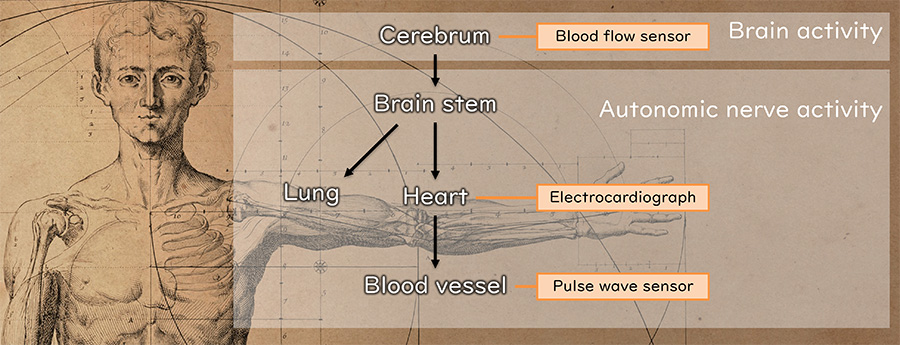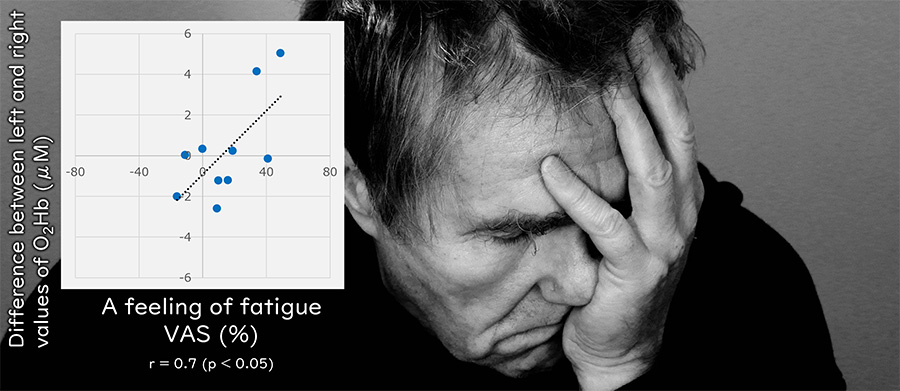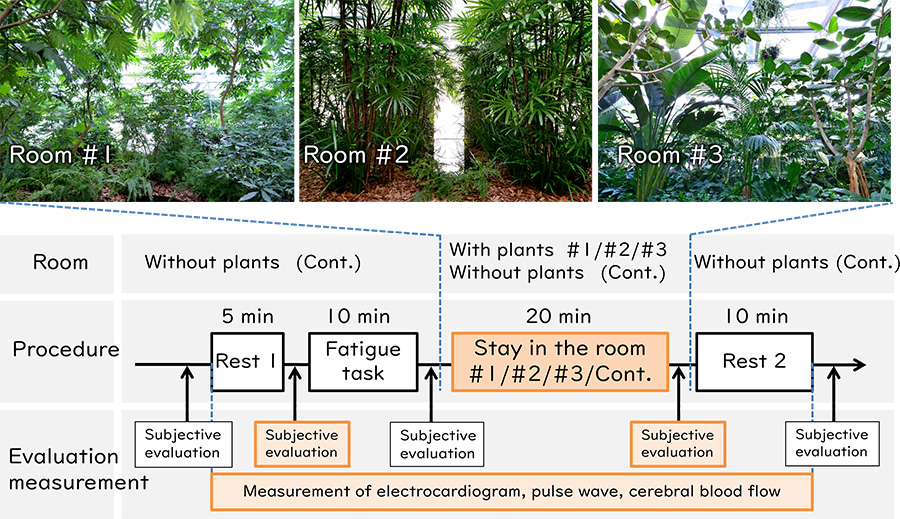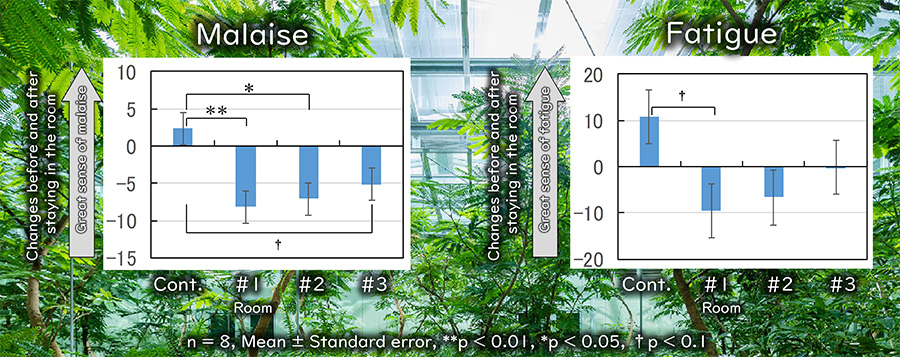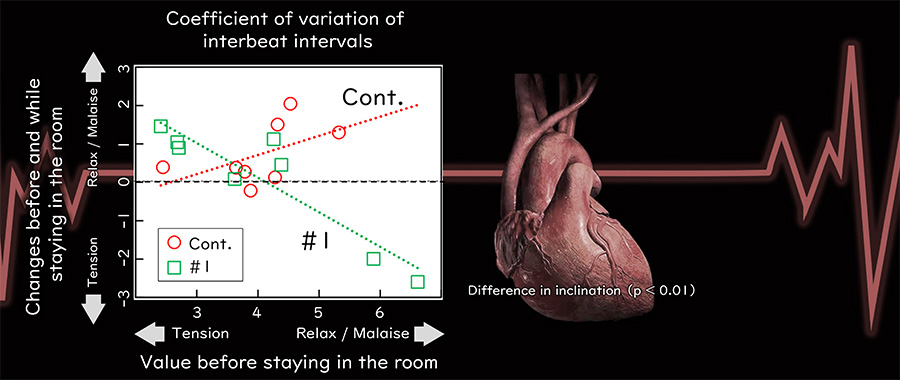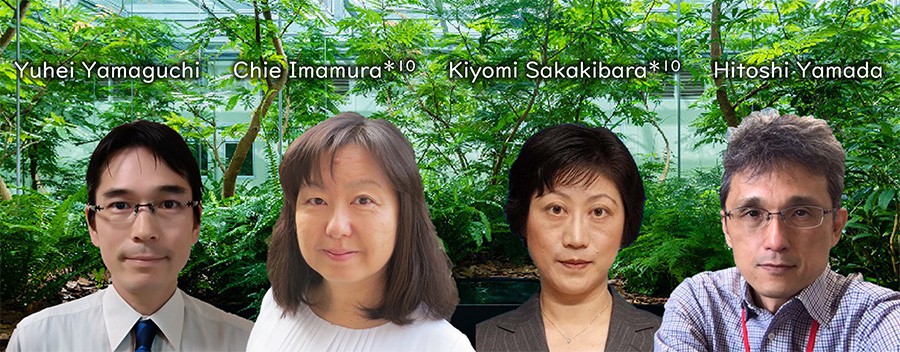Jan. 26, 2023
Genki-KûkanTM Research Initiative (Part 4)Do Genki-KûkanTM spaces really foster health, happiness, and energy?
Toyota Motor Corporation's Frontier Research Center (Toyota) and Toyota Central R&D Labs., Inc. (TCRDL) are working jointly on the Genki-KûkanTM Research Initiative to develop spaces that can improve the mental and physical well-being of people*1*2*3. In Part 3, we discussed the microorganisms that coexist on the skin and we introduced the effects of natural air quality on humans. In Part 4, we spoke to members of this research project, Chie Imamura, Kiyomi Sakakibara, Hitoshi Yamada, and Yuhei Yamaguchi, who are engaged in research on the effects of nature in terms of people's minds and bodies (psychology and physiology).
- What kind of research are you conducting?
- Imamura
- In Japanese, there is a word, shinrinyoku, which literally means "forest-bathing." Many people find exposure to nature to be relaxing and pleasant. In the conventional research on the effects that nature has on people, it has been difficult to coordinate and align the conditions such as temperature, humidity, wind, light, and the like, which are said to affect people physically and mentally, within natural settings and perform physiological measurement. Because of that, it hasn't been possible to adequately verify if being in nature simply changes how people feel, or if it causes physiological changes in people's bodies.
- Sakakibara
- Genki-tronTM is a research space, created by the Genki-KûkanTM Research Project to reproduce conditions like those found in nature. It is a test environment whose temperature, humidity, and brightness can be controlled, and which provides people with a sense of nature experience. We are engaged in research using Genki-tronTM regarding whether people feel healthier, happier, and more energetic when in a Genki-KûkanTM space, not only by conducting a questionnaire, but also by using physiological data.
- What kind of physiological data do you measure, and what does it tell you about us?
- Yamaguchi
We see human physiological conditions in terms of autonomic nerve activity and brain activity. The autonomic nervous system is made up of the sympathetic nervous system and the parasympathetic nervous system. When you become tense, your sympathetic nervous system becomes dominant, and when you become relaxed, your parasympathetic nervous system becomes dominant. Data measured using sensors such as an electrocardiograph and a pulse wave sensor can be used to investigate how the sympathetic nervous system and the parasympathetic nervous system are functioning and determine your degree of tension or relaxation.
Brain activity can also be measured by looking at cerebral blood flow near the forehead. Generally speaking, when the brain becomes active, due to fatigue, computation, or the like, cerebral blood flow increases to replenish the oxygen that is consumed. When the brain calms down, the cerebral blood flow decreases. Therefore, cerebral blood flow is believed to indicate the level of brain activity.
- What effects does nature have on us?
- Yamaguchi
- The experiments in the Genki-KûkanTM showed that nature reduces the level of fatigue (malaise) people feel, and it improves their concentration and performance. They also showed that factors such as differences in the types of plants affected the degree to which people's fatigue was reduced*4*5*6*7*8*9. I'd like to get into the topic of the effects of the Genki-KûkanTM on fatigue in detail. Imamura-san, could you explain what kinds of experiments we performed?
- Imamura
- First, in order to establish an indicator for measuring fatigue, we had study participants play a game that required them to use their mental faculties to their fullest. We also administered a questionnaire on a feeling of fatigue and acquired cerebral blood flow data for the participants before and after they played the game. In the above diagram, on one axis we plotted the amount of change in their feeling of fatigue before and after playing the game. On the other axis, we plotted the difference in the left and right values of the amount of oxygenated hemoglobin (O2Hb), an item of cerebral blood flow data. As the diagram shows, when the level of a feeling of fatigue increased, the left-right difference in oxygenated hemoglobin levels also rose*4*9. We'll be looking at this diagram again, later.
- Imamura
- Next, we did an experiment to investigate the effects of different types of plants. Genki-tronTM has three rooms, each with plants with similar shaped leaves: Room #1 contains plants with small leaves; Room #2 contains plants with long, thin leaves; and Room #3 contains plants with large, wide leaves. These three rooms were created with the expectation that each would have different effects*1. Room 1 was expected to reduce fatigue, Room 2 to improve concentration, and Room 3 to increase vitality. Eight women in their 30s and 40s participated by spending time in these three rooms with plants (Rooms #1, #2, or #3) and in a control room, which do not have any plants (indicated in the diagrams as "Cont."). The participants stayed in one room per day and the experiment took four days per participant. The participants stayed in each room for 20 minutes, and we compared the results of subjective evaluations and physiological measurement data from before and after their stays. First, let's look at the results of the subjective evaluation questionnaires.
- Sakakibara
- The questionnaire results indicated that staying in the room without any plants increased both feeling of fatigue and malaise, whereas staying in the rooms with plants decreased them. Feeling of fatigue and malaise levels fell by a particularly large amount in Rooms #1 and #2. These results showed that staying in a room with plants reduced both feeling of fatigue and malaise.
- Imamura
- Next, we used the fatigue indicator we introduced above (at left in the above diagrams) to look at the amount of change in fatigue before and after staying in the room. The diagram at above right shows the change over time in the difference between the left and right oxygenated hemoglobin (O2Hb) values. The difference between left and right oxygenated hemoglobin values fell further for participants while in the rooms with plants than for while in the room without plants, so it can be inferred that one of the effects of the plants was reduction of feelings of fatigue*6*7.
- Yamada
- So far, we've talked about results concerning the relationship between brain activity and Genki-KûkanTM. We are also carrying out research that aims to elucidate the relationship between autonomic nerve activity and Genki-KûkanTM based on heart activity (heart rate). We are focusing on how much variability there is in the heart rate and how it changes. Sakakibara-san, could you talk about the effects of Genki-KûkanTM in terms of heart rate variability?
- Sakakibara
- Certainly. The coefficient of variation of interbeat intervals (IBI) is one indicator of heart rate variability, so we looked at the difference in it before and after staying in one of the rooms (see the diagram above). If we look at the graph for Room #1, we see that the straight line for it slopes downward. This shows that when people who were tense before entering Room #1 entered, they became relaxed, and people who were relaxed became more tense after entering the room. In other words, through our research, we have confirmed that spending time in the room with plants could moderate people's autonomic nerve activity*8.
- So Genki-KûkanTM spaces don't just affect us emotionally, but they also affect us physically.
- Yamada
- That's right. We believe that Genki-KûkanTM spaces affect our brain activity and autonomic nerve activity. We are now developing methods for investigating in greater detail how they affect autonomic nerve activity. I look forward to sharing the results if there is ever an opportunity.
- We look forward to hearing them. Thank you for your time today.
References
| *1 | Genki-KûkanTM Research Initiative (Part 1), Reproducing slices of nature in the laboratory, Frontier Research Center, Toyota Motor Corporation. |
|---|---|
| *2 | Genki-KûkanTM Research Initiative (Part 2), Air quality research that opens up a new world, Frontier Research Center, Toyota Motor Corporation. |
| *3 | Genki-KûkanTM Research Initiative (Part 3), Effects of natural air quality on humans, Frontier Research Center, Toyota Motor Corporation. |
| *4 | Summaries of Technical Papers of Annual Meeting, Architectural Institute of Japan (2020), 40041, Imamura et al., Study on the space of biophilia toward human well-being (Part 5) Evaluation of human fatigue: NIRS and autonomic index. |
| *5 | Conference proceedings, The 84th Annual Convention of the Japanese Psychological Association (2020), p 375, Sakakibara et al., Evaluation of the physiological effects of staying in green space on mental fatigue. |
| *6 | Summaries of Technical Papers of Annual Meeting, Architectural Institute of Japan (2021), 40081, Imamura et al., Study on the space of biophilia toward human well-being (Part 8) Physiological effects of staying in indoor biophilic environment. |
| *7 | Imamura C, Sakakibara K, Arai K, Ohira H, Yamaguchi Y, Yamada H. Effect of Indoor Forest Bathing on Reducing Feelings of Fatigue Using Cerebral Activity as an Indicator. International Journal of Environmental Research and Public Health. 2022; 19(11):6672. |
| *8 | Conference proceedings, The 85th Annual Convention of the Japanese Psychological Association (2021), p 108, Sakakibara et al., Evaluation of the physiological effects of staying in green space on mental fatigue (Part 2). |
| *9 | Japanese journal of physiological psychology and psychophysiology (2020) 38(2), p 87, Imamura et al. (Only Japanese) |
| *10 | These results were obtained while they were temporarily assigned to Toyota. After they returned to TCRDL, the Genki-KûkanTM Research has been continued jointly by Toyota and TCRDL. |
Contact Information (about this article)
- Frontier Research Center
- xr-probot@mail.toyota.co.jp


